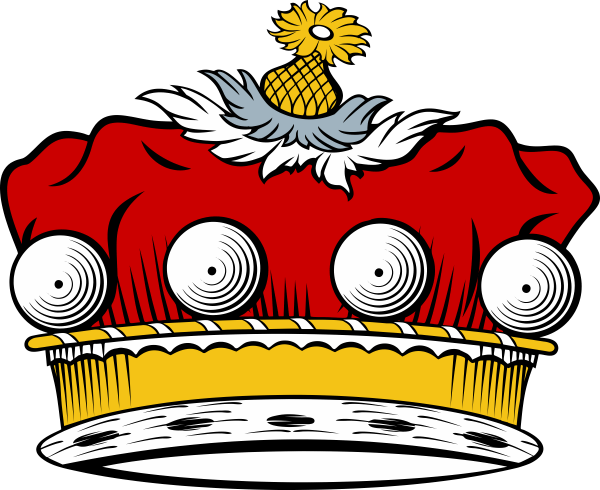Noble titles: Baron

In the British peer system, barons rank below viscounts, and form the lowest rank in the peerage. A female of baronial rank has the honorific baroness. A baron may hold a barony (plural baronies), if the title relates originally to a feudal barony by tenure, although such tenure is now obsolete in England and any such titles are now held in gross, if they survive at all, as very few do, sometimes along with some vestigial manorial rights, or by grand serjeanty.
William I introduced "baron" as a rank in England to distinguish the men who had pledged their loyalty to him (see Feudalism). Previously, in the Anglo-Saxon kingdom of England, the king's companions held the title of earls and in Scotland, the title of thane. All who held their barony "in chief of the king" (that is, directly from William and his successors) became alike barones regis (barons of the king), bound to perform a stipulated service, and welcome to attend his council. Before long, the greatest of the nobles, especially in the marches, such as the Earls of Chester or the Bishops of Durham, might refer to their own tenants as "barons", where lesser magnates spoke simply of their "men" (homines).
Initially those who held land direct of the crown by military service, from earls downwards, all alike bore the title of baron, but under Henry II, the Dialogus de Scaccario already distinguished greater (who held in baroniam by knights' service) or lesser baronies (generally smaller single manors). Within a century of the Norman Conquest, as in Thomas Becket's case (1164), there arose the practice of sending to each greater baron a special summons to the council that evolved into the House of Lords, while the lesser barons, Magna Carta (1215) stipulated, would receive summons only in general, through the sheriffs. Thus appeared a definite distinction, which eventually had the effect of restricting to the greater barons the rights and privileges of peerage.
Later, the sovereign could create a new barony in one of two ways: by a writ of summons directing someone to Parliament, or by letters patent. Writs of summons featured in medieval times, but creation by letters patent has become the norm. Baronies thus no longer directly relate to land ownership, following the Modus Tenendi Parliamenta (1419), the Feudal Tenure Act (1662), and the Fines and Recoveries Act (1834) which enabled such titles to be dis-entailed.
In the twentieth century Britain introduced the concept of non-hereditary life peers. All appointees to this distinction have taken place at the rank of baron.
In addition, Baronies are often subsidiary titles, thus being used as courtesy titles by the eldest sons of earls.
[edit] Scotland
In Scotland, the rank of baron is a rank of the ancient feudal nobility of Scotland and refers to a holder of a feudal barony, formerly a feudal superiority over a proper territorial entity erected into a free barony by a Crown Charter, and is not usually considered a rank of Peerage. The Scottish equivalent of an English baron is a Lord of Parliament.
 In the British peer system, barons rank below viscounts, and form the lowest rank in the peerage. A female of baronial rank has the honorific baroness. A baron may hold a barony (plural baronies), if the title relates originally to a feudal barony by tenure, although such tenure is now obsolete in England and any such titles are now held in gross, if they survive at all, as very few do, sometimes along with some vestigial manorial rights, or by grand serjeanty.
In the British peer system, barons rank below viscounts, and form the lowest rank in the peerage. A female of baronial rank has the honorific baroness. A baron may hold a barony (plural baronies), if the title relates originally to a feudal barony by tenure, although such tenure is now obsolete in England and any such titles are now held in gross, if they survive at all, as very few do, sometimes along with some vestigial manorial rights, or by grand serjeanty.